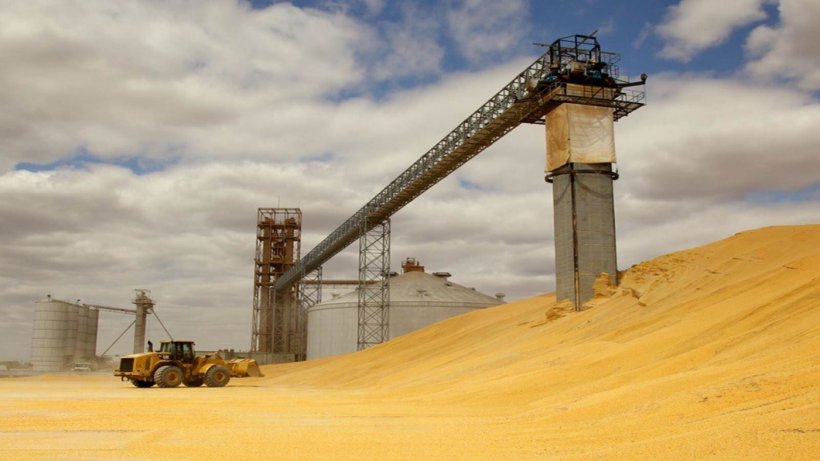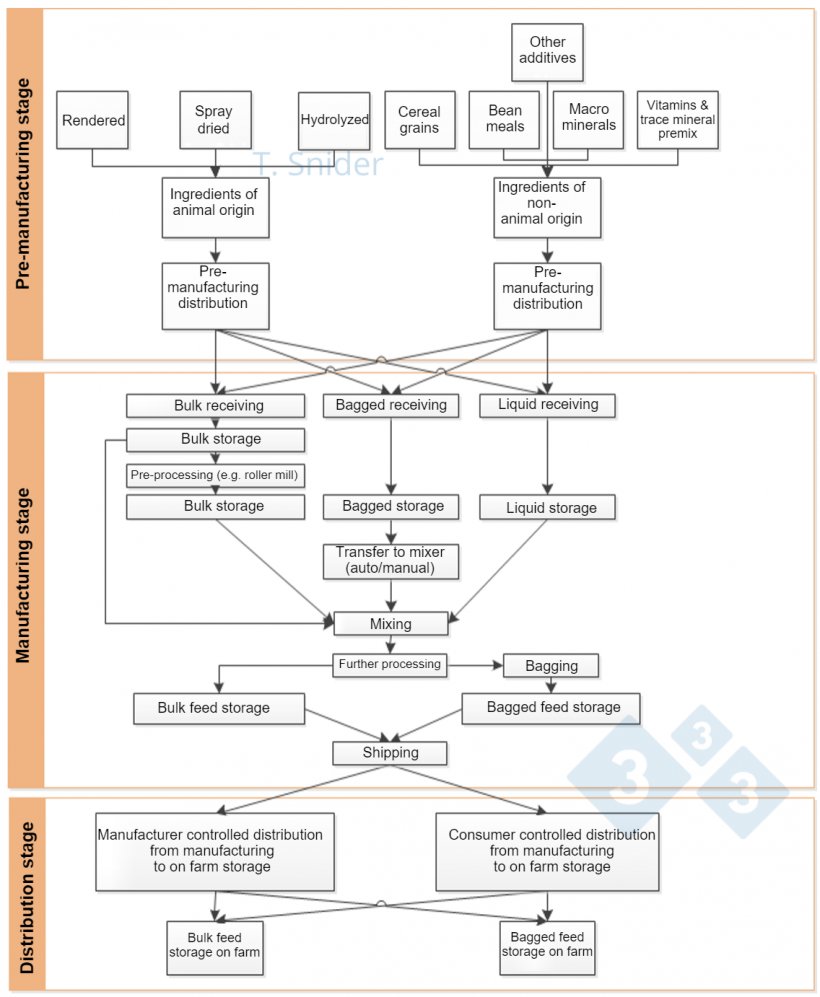Feed biosecurity assessments: A critical element of any comprehensive biosecurity program

The basis of an effective feed biosecurity program requires an understanding of pathogen cross contamination and survival at each segment of the feed supply chain including: 1) Feed ingredient manufacturing and delivery, and 2) Feed manufacturing and delivery. In this series of articles, we will review how disease transmission through the feed supply chain gained prominence in recent years and outline the characteristics of a comprehensive feed biosecurity program that considers the biosecurity of: 1) feed ingredients before they enter a feed mill and 2) the milling and delivery processes.
Biosecurity of feed ingredients & feed: A brief history of pig farm biosecurity programs in recent years.
Feed is the largest input for pig production by volume and cost. However, it commonly enters the biosecure production area with minimal or no biosecurity interventions. It is important to note that the vast majority of feed is likely to be free of any disease-causing agents and, even if they are present, they may not be present in a sufficient quantity or infectious form to cause disease. That means that, most of the billions of kilograms of feed consumed every year by pigs around the globe are safe to consume without the risk of disease transmission. However, it is equally as important to note that when, on the rare occasion, there is an adequate amount of infectious material present, the implications can be catastrophic! Finally, it is critical to note that the risk of transmitting disease through feed becomes greater during epidemic outbreaks when the amount of infectious agent in the environment becomes significantly higher.
The focus on feed and feed ingredient biosecurity followed the introduction and transmission of PEDV into and within the North American domestic pig population that resulted in an epidemic of PEDV outbreaks in 2013 and 2014. Although it was difficult to verify, feed was often suspected in the transmission of the disease in the initial months of the epidemic in the United States. When the disease eventually entered the Canadian pig population in early 2014, the index cases were directly linked to a contaminated feed ingredient imported from the United States. The transmission through the contamination of feed ingredients and feed was well documented by Canadian researchers. The subsequent acceptance of the feed as a transmission pathway in the North American industry resulted in a true collaboration between those producing feed ingredients, the feed industry and pig health experts to minimize the risks to pigs and pig producers. Since 2014, many scientific studies focusing on the survival of pathogens in feed and feed ingredients as well as the effectiveness of different mitigation strategies (i.e. biosecurity and decontamination strategies) have been performed by researchers in both academia and the private sector as a result of these events.
The risk of transmitting a pathogen through the feed supply chain depends on the likelihood of:
The science of understanding disease transmission through pig feed has promoted the concept that a comprehensive farm biosecurity program must include an assessment of the complete feed supply chain in order to identify and address the hazards to prevent the transmission of pathogens due to contaminated ingredients or contamination during the milling and delivery process.
In the next two articles of this series, we will focus upon the biosecurity of: 1) the ingredient supply chain (i.e. Pre-manufacturing) and 2) the feed milling and distribution portion of the supply chain (i.e. Manufacturing and Post-manufacturing) as defined below and summarized in Image 1.
Ingredient supply chain
Pre-manufacturing stage: risk depending the type of ingredient (animal and non-animal origin) and disease status of the feed ingredients at entry
Feed milling and distribution
Manufacturing stage: risk for cross-contamination and survival of pathogens during reception, storage and manufacturing of the feed
Post-manufacturing stage: risk for cross-contamination and survival of pathogens during the distribution process of the feed to the farm and back to the feed mill.








